Bacteria and other thermophiles (heat loving microorganisms) usually form the ribbons of color like you see here. The green, brown, and orange mats are cyanobacteria, which can live in waters as hot as 167 F (73 C). At this temperature they are usually yellow-green. They become orange, rust, or brown as the water cools. In cooler water other thermophiles may appear that will modify the colors even more. Color may also change due to stress, such as the intense sunlight of mid summer.

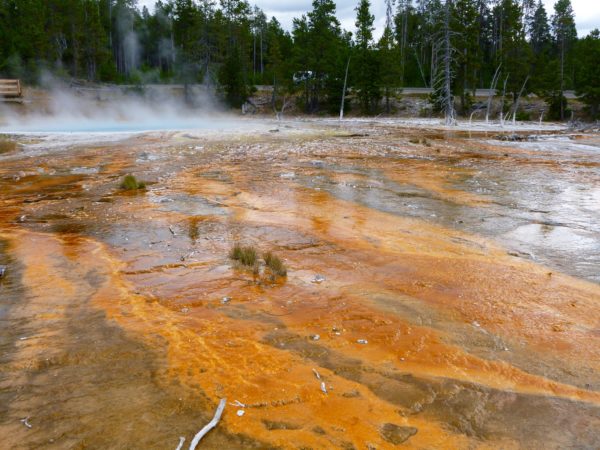
This nearly constant performer splashes from several vents and its steam can be seen throughout the Lower Geyser Basin. Its name is Greek for water clock, and was given because the geyser used to erupt regularly every three minutes. Since the 1959 Hebgen earthquake, however, Clepsydra erupts almost without pause.
The small geyser in front of Clepsydra is Spasm Geyser and is quiet after its big neighbor erupts, then resumes splashing to 3 feet.
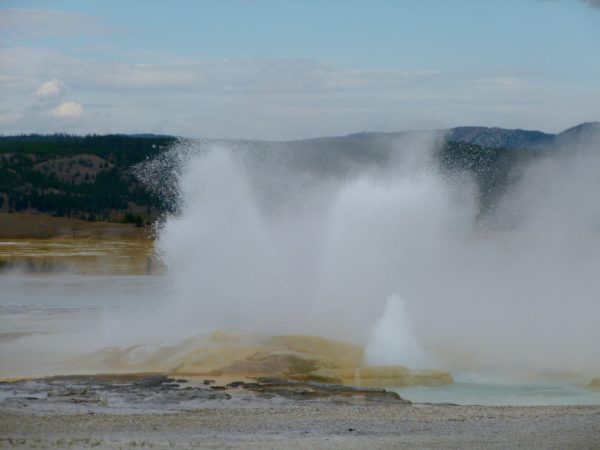
Fountain Paint Pot is one of many mudpots found in the park. In early summer the mudpots are thin and watery from abundant rain and snow. By late summer they are quite thick. The mud is composed of clay minerals and fine particles of silica. In this area the rock is rhyolite, which is composed primarily of quartz and feldspar. Acids in the steam and water break down the feldspar into a clay mineral called kaolinite.
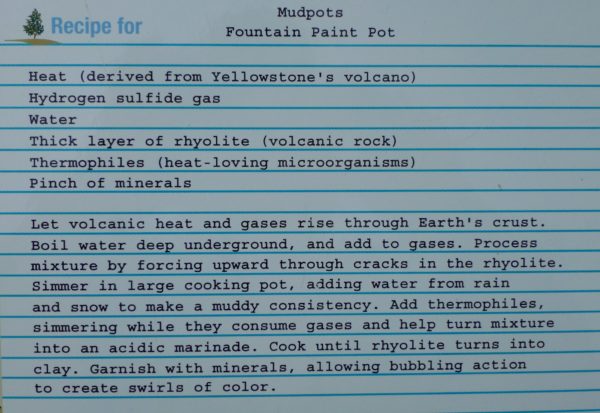

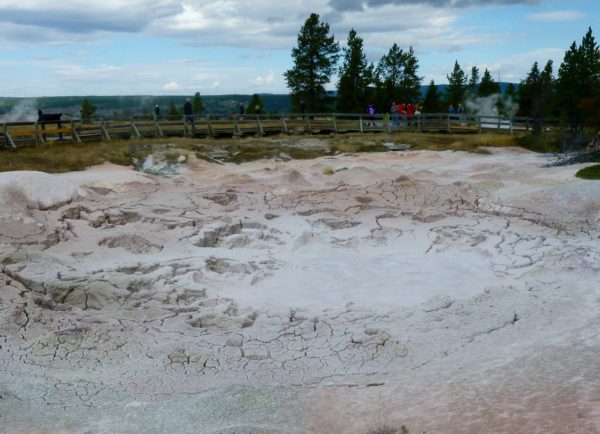
Imagine traveling back in time to Aug 17 1959. If you were standing where the picture below was taken, you would find yourself on a grassy knoll. Red Sprouter did not exist! Shortly before midnight a major earthquake rocked Hebgen Lake, MT approx 25 miles northwest. Jolts rippled through Yellowstone. In the aftermath Red Sprouter was born.
In fact, under the wood bridge for pedestrians, there are remnants of a paved road. Due to Red Sprouter’s formation, roads needed to be re-routed to preserve this fumarole.
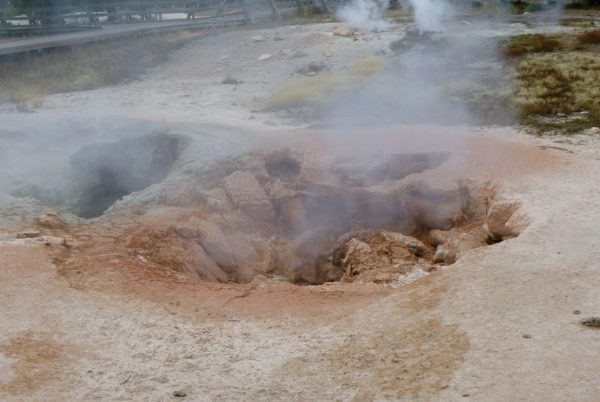

3 thoughts on “Yellowstone – Fountain Paint Pot Trail”
Looks like a perfect place to spend Halloween, a little eery!
amazing
Thanks Sue. Yellowstone exceeded expectations.